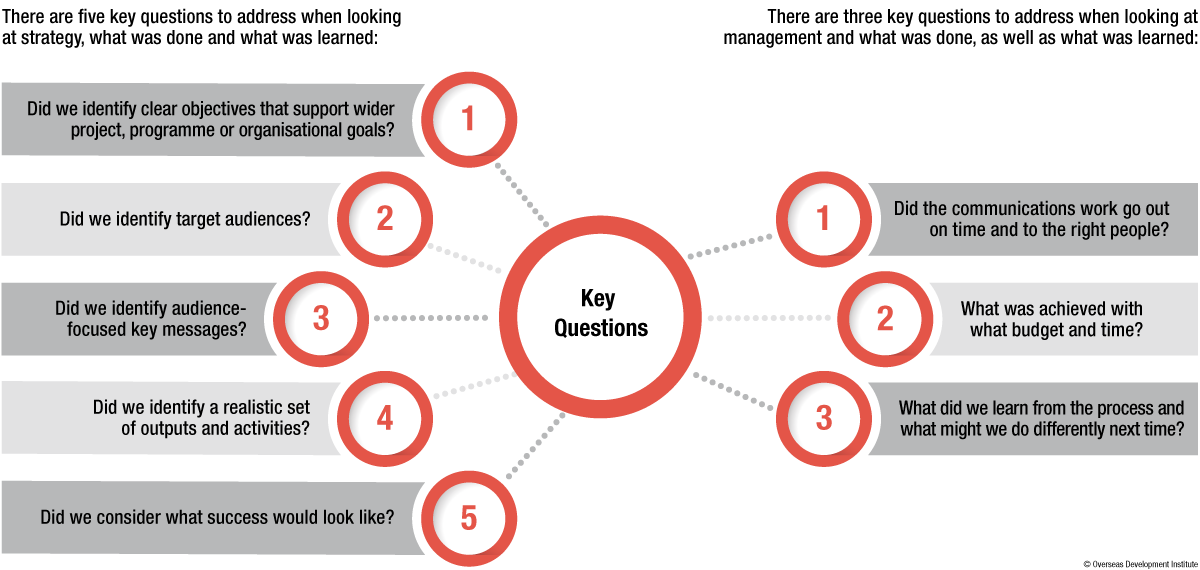Strategy and management
How to plan for quality and usefulness
To achieve impact, communications work needs to be both strategic and high quality.
While a low-quality communications output can still achieve some positive impact, if it is relevant and topical, it can potentially cause longer-term risks to reputation and credibility. Similarly, if you create a dozen high quality communications outputs but don’t consider who your audiences are and how you are going to reach them, then you’re wasting time and energy.
To ensure that your communication work is strategic and the outputs are of a high quality, you should develop a communications plan. This does not need to be a complicated or long document, but it should include:
For large projects and programmes, it is necessary to have a more sophisticated communications strategy. This will follow the same form as above, but go into more detail.
Once you have your plan, you need to ensure that systems and processes are in place to deliver it. Again, these do not need to be complex. Your organisation will probably already have systems in place for managing project delivery (such as project plans, Gantt charts, routine meetings, and reporting). Just ensuring that communication activities and products are clearly identified, and that they are realistic given your resources, should be enough.
Learning from your communications strategy and management
Where possible, the answers to these questions should be backed up by facts and figures, but can be brought together informally through a follow-up meeting or after-action review.


